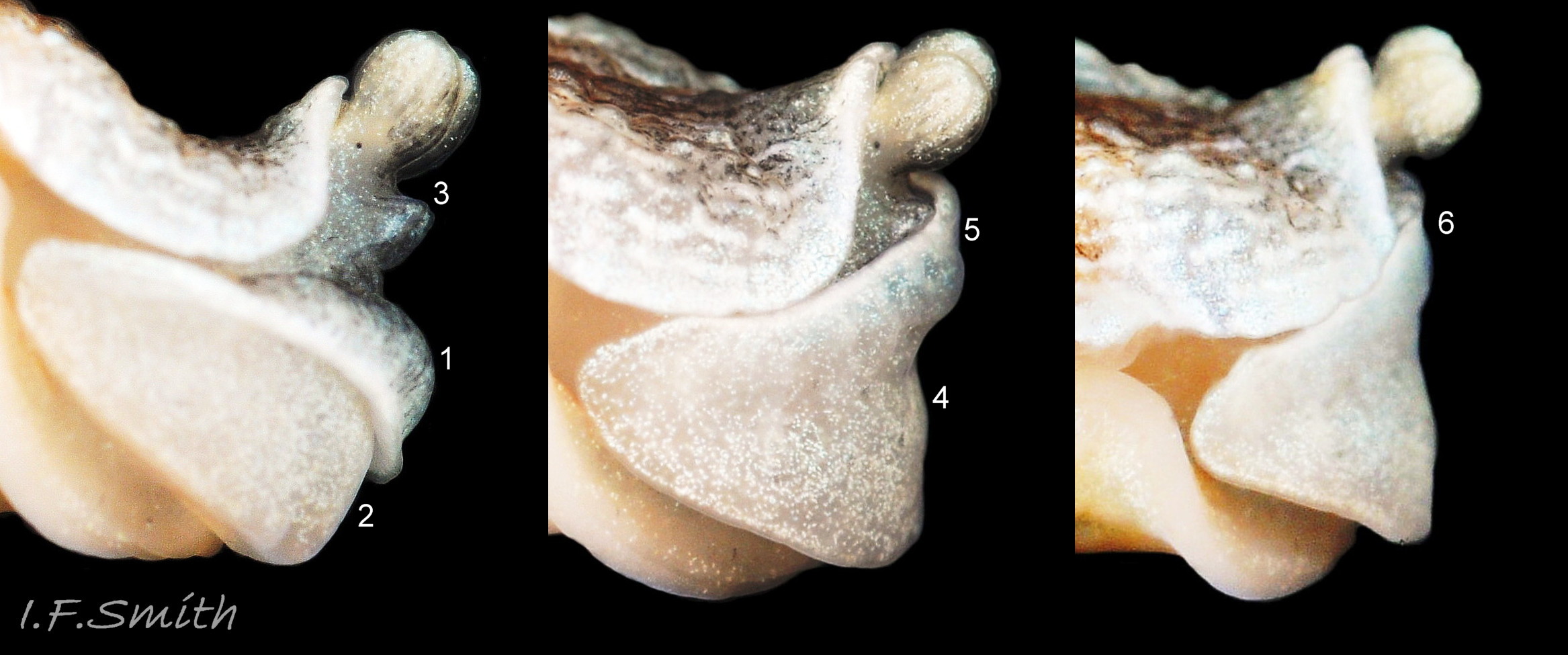1: Proximal face of cephalic shield being unfolded to face backwards as shield is positioned to protect the anterior from sediment ingress when burrowing.
2: Part of distal face exposed to act as anterior of shield.
3: Rhinophores, small black eye and caruncle fully exposed.
4: Unfolding complete, distal face of shield now shaped like a snow plough for moving through the surface layer of a soft substrate.
5: Shield resting against caruncle, leaving a gap open between shield and mantle for an inhalent respiratory current.
6: Shield positioned to give maximum protection. All that will protrude from the substrate is the rhinophores, the eye by the edge of the mantle and the small respiratory gap between the mantle edge and shield.
Thompson & Brown in 1976 wrote that the head is ‘produced laterally into pointed tentacles‘ and in 1984 changed it to ‘blunt tentacles’ . Both publications had drawings, but they and the descriptions were of old distorted preserved specimens. The lateral ends of the ovoid cephalic shield on live specimens do not resemble tentacles in any of the many positions they can assume 06 Armina loveni. Length 19.4mm. Sublittoral, Orkney, Scotland. May 2017. Leg. S. Taylor. .
Picton & Morrow (accessed March 2018) stated ‘The foot forms a shield across the front of the head’; but it is part of the head that is raised to act as a cephalic shield when burrowing into sediment 11A .
Length 19.4mm. Sublittoral, Orkney, Scotland. May 2017. Leg. S. Taylor.

